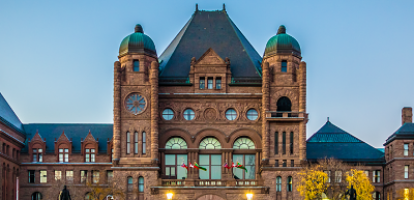From: Daniel Schwanen and William B.P. Robson
To: Canadians concerned about reopening the economy
Date: April 29, 2020
Re: Our lessons in loosening lie in Europe
With encouraging signs on the COVID-19 health front, and mounting evidence of the costs of containing it, attention has shifted to the world’s economies. This is a global pandemic, and many countries have begun to reopen on their own terms. Here in Canada, governments in Ontario, Saskatchewan, Prince Edward Island and New Brunswick have announced plans for lifting some constraints.
What can we learn from progress elsewhere?
Many jurisdictions we would like to imitate – Taiwan, South Korea, Hong Kong – are in a class of their own. They imposed targeted travel checks and restrictions early, built more testing capacity, produced more protective equipment, and implemented electronic monitoring or tracing to a degree that – even if we could – we would hesitate to use. Plus, their main supplier and market, China, restarted manufacturing weeks ago.
Two other countries we often look at, Australia and New Zealand, are also in the unattainable group. They are island countries that clamped down on travel and domestic activity early and hard. We can look to them, like their Asian neighbours, for hopes about where we may be by fall, but we cannot jump immediately from here to there.
We don’t want to end up among a second group of countries where restrictions on activity were later, fewer and milder. Some, such as Singapore and Japan, had reassuringly few cases early on, but more recently reacted to increases with clampdowns. Sweden, another country with a less restrictive approach, has so far stayed the course, but Britain, which also started easier, tightened up as cases and deaths mounted.
Canadian provinces that got off to a bad start – notably Quebec and Ontario, and seemingly Nova Scotia – have paid a heavy economic price to bend the COVID-19 curve. We want to build on that progress, not slip back.
Then there’s a third group abroad, which has the most relevant lessons for Canada. Mainly in Europe, some of these countries suffered worse ravages early on, imposed heavy restrictions and are now relaxing them.
Denmark and Israel, for example, clamped down quickly after confirming their first cases and also did well in ramping up testing. Italy and Spain suffered horrendous outbreaks, but have contained them with physical-distancing measures, restrictions on movement, and business and institutional closings like ours. Italy imposed penalties for breaking movement restrictions, including between municipalities. In addition to closings, Austria made face masks mandatory early on. Germany forbade more than minimal public gatherings.
This third group, which is ahead of us in containing the virus, will teach us a great deal as we approach the next stage. Many are reopening schools and daycares, so that education resumes and people with children can get back to work. They are reopening businesses, prioritizing urgent services and those small enough or otherwise configured to minimize health risks to employees and customers. All continue to impose or urge physical distancing and, for the time being, restrictions on gatherings. Many have layered on restrictions such as compulsory face masks on public transit. They are all stepping up testing, monitoring and electronic tracing. They are all wrestling with the balance between intrusive surveillance and contact tracing and civil liberties – the same tensions Canada must deal with in the weeks and months ahead.
Then there is the United States – geographically close by and vitally important as Canada seeks to return to full production. As in Canada, COVID-19 has affected different US regions differently. Late in reacting in many ways, the US is nevertheless flattening its curve. Even hard-hit New York and Michigan are seeing progress and taking small steps toward lifting restrictions. That is good news for us – we want them to be physically and economically healthy, for their sake and ours.
As with the struggle on the health front, a key looming challenge will be sorting out information that is reliable and relevant. We cannot get to where the leaders are right away. But we are in better shape than the laggards. Let’s look to countries such as Denmark, Israel and Austria, which are ahead in containing the disease and getting back to work – just as we hope to do soon.
Daniel Schwanen is vice-president, research, and William B.P. Robson is president and chief executive officer, at the C.D. Howe Institute.
To send a comment or leave feedback, email us at blog@cdhowe.org.
The views expressed here are those of the authors. The C.D. Howe Institute does not take corporate positions on policy matters.
A version of this memo first appeared in The Globe and Mail.





